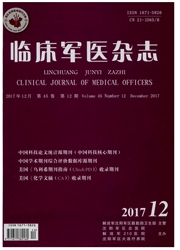

 中文摘要:
中文摘要:
目的探讨心肌细胞支链氨基酸(BCAA)代谢障碍在儿茶酚胺诱导的心肌细胞毒性中的作用。方法分离并培养新生大鼠心室肌细胞(NRVMs),给予异丙肾上腺素(ISO)20μmol/L处理48 h模拟儿茶酚胺毒性,ISO刺激同时给予支链α-酮酸脱氢酶激酶(BDK)特异性抑制剂3,6-二氯-2-苯并噻吩羧酸(BT2)处理(40μmol/L)。48 h后,蛋白质印迹法(Western blot)检测BCAA代谢相关酶及细胞凋亡相关酶蛋白的表达;分光光度法检测支链-α酮酸脱氢酶(BCKD)活性;给予外源性BCAA(5 mmol/L)后,分时间点检测培养基中BCAA浓度,直接反映心肌细胞BCAA降解速率;流式细胞术检测心肌细胞凋亡。结果 ISO处理激活心肌细胞线粒体凋亡通路并引起心肌细胞凋亡。与对照组比较,ISO组心肌细胞中BDK表达明显上调,引起BCKD活性下降和BCAA降解障碍。给予BDK抑制剂BT2处理后,能够逆转ISO刺激造成的心肌细胞BCAA降解障碍并明显抑制心肌细胞凋亡。结论抑制BDK能够减轻儿茶酚胺毒性诱导的心肌细胞凋亡,改善心肌BCAA降解障碍有可能成为减轻儿茶酚胺毒性的新策略。
 英文摘要:
英文摘要:
Objective To explore the role of BCAA metabolism in catecholamine-induced cardiomyocyte apoptosis. Methods Neo- natal rat ventricular myoeytes (NRVMs)were isolated and euhured. Catecholamine toxicity was induced in the cardiomyocyte by isopre- naline(ISO) stimulation(20 μmol/L)with or without the specific branched-chain α-ketoacid dehydrogenase kinase (BDK)inhibitor BT2 co-treatment(40 μmol/L). Meanwhile,a specific mitochondrial ROS scavenger named Mito TEMPO was used( 10 nmol/L)as a positive control for the following experimental results. After 48 hour-stimulation, expression levels of the enzymes involved in cardiac BCAA catabolism were determined by Western blot. Correspondingly, BCAA catabolic rate and branched-chain α-ketoacid dehydrogen- ase(BCKD) activity were determined in the eardiomyocyte. BCKD activity was examined by speetrophotometry. At various time points, the concentration of BCAA in the culture medium was determined by colorimetric assay to reflect the BCAA catabolic rate after an ini- tial treatment of BCAA(5 mmol/L) ,respectively. Catecholamine-indueed cardiomyocyte apoptosis was evaluated by annexin V-FITC/ PI double staining combined with flow cytometry. Results ISO stimulation induced mitochondrial apoptotic pathway activation and subsequent cardiomyocyte apoptosis. Notably, ISO treatment caused remarkable BDK upregulation,therefore,leading to the phosphoryl- ation/inactivation of BCKD and BCAA catabolic disorders. These effects were reversed by the BDK inhibitor co-treatment. Surprisingly, pharmacological inhibition of BDK significantly alleviated sustained ISO stimulation-mediated mitochondrial apoptotic pathway acti- vation and cardiomyoeyte apoptosis. Conclusion The present study demonstrates that sustained ISO stimulation induces obvious BCAA catabolic defects in the cardiomyocyte, due largely to BDK upregulation. Of note, pharmacological inhibition of BDK is a novel and effective approach to ameliorate ISO-mediated cardiomyocyte apoptosis. For the fi
 同期刊论文项目
同期刊论文项目
 同项目期刊论文
同项目期刊论文
 期刊信息
期刊信息
